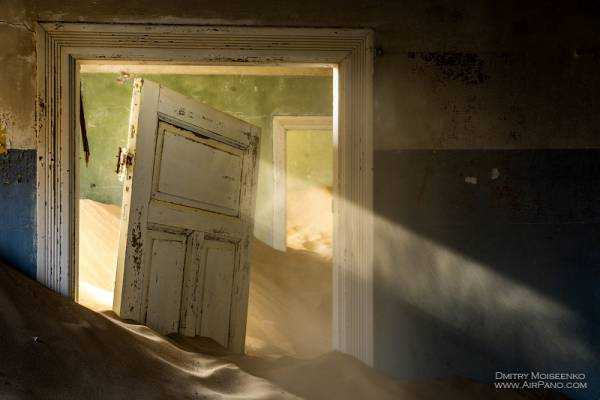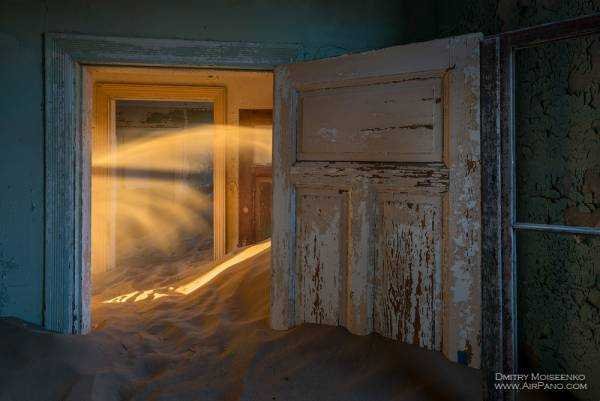Many science fiction films play with the idea of a post-apocalypse: most people disappear from Earth, and lifeless buildings remain in place of once-bustling megalopolises, where the wind blows and wild animals reign. However, you can see this in reality: there are already ghost towns on our planet. Among them is Kolmanskop in Namibia.

Its history is linked to the “diamond fever” that swept the country at the beginning of the 20th century. In 1904, the first diamond was found in Namibia, and from that moment on, many people wanted to get rich quick. Among them was the German August Stauch: he took the post of chief foreman on the railway near the port city of Luderitz on the Atlantic coast, and in his free time he was interested in mineralogy and even received a license to prospect for diamonds.

He asked his subordinates to look for “unusual shiny stones” in the sand. One of them succeeded: in 1908, a railroad worker named Zacharius Leval noticed several small diamonds right on the surface of the desert. Stauch bought up the nearby lands and founded a settlement there.

He invited his compatriots to search for diamonds, and as a result Kolmanskop turned into a model German city: with neat houses, a town hall, a school, a hospital, a theater, a casino, and a stadium. Moreover, it was in Kolmanskop that the first X-ray station in the southern hemisphere was opened and the first tram in Africa was launched.

For two decades, things were going well: there weren't many diamonds here, but like all Namibian diamonds, they were exceptionally pure. Their origin was simple: the minerals were washed out of the rock by underground rivers and fell into the ocean, the surf washed them up on the shore, and then the wind carried them away along with the sand.

But year after year, fewer and fewer precious stones appeared, and there was no point in people staying in Kolmanskop. Gradually, they began to leave the city, and the biggest exodus was triggered by the discovery of Namibia's largest diamond deposits in 1928. The new deposit was located 270 kilometers from Kolmanskop; its inhabitants went to try their luck there, with some even leaving all their belongings behind.

By the 1950s, Kolmanskop was completely deserted, but today it can hardly be called deserted: the diamond ghost town has become a popular tourist destination. It is located in the “Forbidden Zone”, which occupies about 26,000 square kilometers along the Atlantic coast. This land belongs to a diamond mining corporation. And although the precious mineral is mined only in 5% of the territory - the remaining areas are “buffer”, you cannot get there without a special pass.

In the case of Kolmanskop, the issue is resolved simply: the absence of diamonds there is practically proven, and a pass can be bought at the gate at the entrance to the city. A walk between abandoned old houses with dead windows surrounded by indifferent deserted hills evokes philosophical thoughts: see for yourself with the help of AirPano panoramas!
Photo: Dmitry Moiseenko
Source: travel.ru

